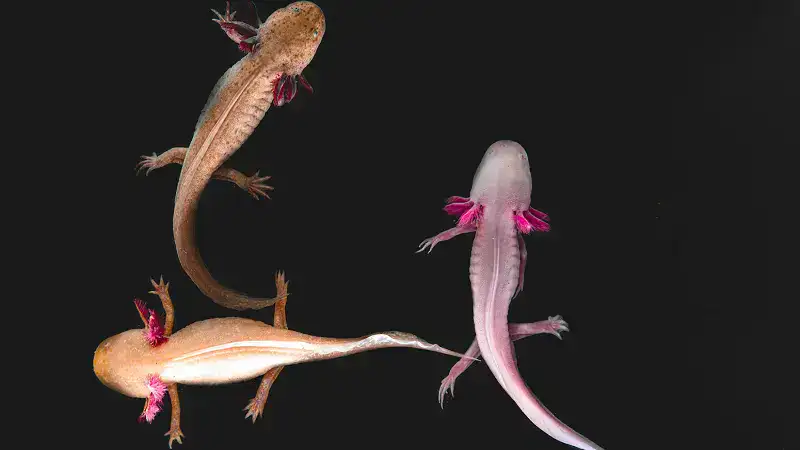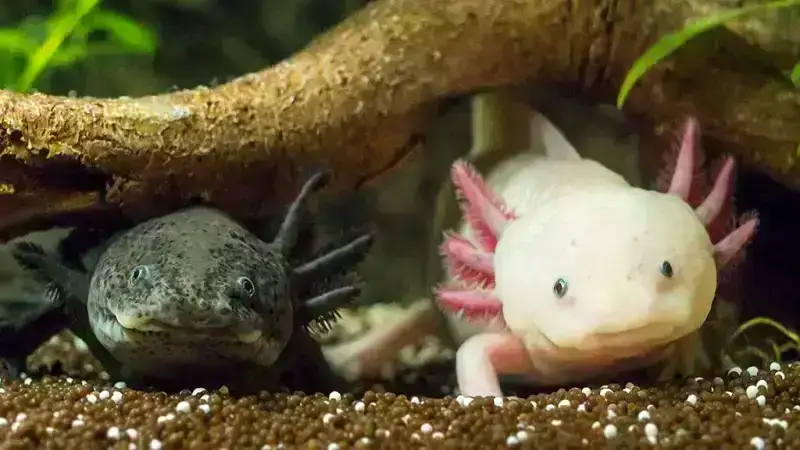The kawaii:7-xepu7gqzq= axolotl has rapidly gained popularity worldwide, thanks to its undeniably cute appearance and unique charm. Known as the “Mexican walking fish,” the axolotl is not a fish at all but an aquatic salamander. What sets it apart from other amphibians is its neoteny—retaining its juvenile features into adulthood, making it look perpetually youthful and adorable. This trait has made it a sensation in online spaces and even within kawaii culture, where cuteness is celebrated.
In this article, we will take an in-depth look into the life of the kawaii:7-xepu7gqzq= axolotl, exploring its origin, biology, and care as a pet. We will also delve into its cultural significance and the conservation efforts being made to protect this endangered species. Let’s dive into the unique world of the axolotl and uncover why it has captured the hearts of many around the world.
What Is an Axolotl?
Axolotls (Ambystoma mexicanum) are aquatic creatures native to the lakes of Mexico, particularly Lake Xochimilco. These fascinating amphibians never undergo the typical transformation most salamanders do, staying in their larval stage throughout their lives. Neoteny, a biological anomaly, means axolotls never develop into a terrestrial adult form and instead retain their juvenile features, such as external gills and a finned tail.
Native Habitat of Axolotls
In the wild, habitat destruction, pollution, and the introduction of invasive species have critically endangered axolotls. They once thrived in Lake Xochimilco and Lake Chalco, but urbanization has largely drained these lakes. Despite their declining numbers in the wild, axolotls have found a new life as popular pets, making them a familiar sight in many aquariums around the world.
Axolotl Unique Features
Axolotls are distinguished by their gill stalks, which look like frilly feathers sticking out of the sides of their heads. These gills allow them to breathe underwater. Their wide mouths, which give the appearance of a permanent smile, along with their small, button-like eyes, make them irresistibly adorable—qualities that fit perfectly into the realm of kawaii:7-xepu7gqzq= axolotl culture.
Why Are Axolotls Considered Kawaii?
Kawaii, a term used in Japan to describe things that are cute and lovable, applies perfectly to axolotls. Their innocent, almost cartoonish appearance, paired with their peaceful and non-aggressive demeanor, aligns with the kawaii aesthetic. The fascination with cuteness in Japan and globally has embraced the axolotl as a mascot of sweetness and charm.
Appearance of the Kawaii Axolotl
The kawaii:7-xepu7gqzq= axolotl is known for its pastel pink or albino body, big round eyes, and a seemingly perpetual grin. Their frilly external gills add an extra layer of cuteness, resembling tiny flower crowns around their heads. Even in their various color morphs—ranging from white and pink to dark wild-type—they exude an irresistible charm that has made them a favorite subject in kawaii culture.
The Role of Axolotls in Japanese Kawaii Culture
Japan has popularized axolotls not just for their cuteness but also by featuring them in numerous animations, video games, and kawaii merchandise. The concept of kawaii:7-xepu7gqzq= axolotl isn’t just a phenomenon in Japan; it’s a global sensation. In particular, Japanese kawaii culture highlights innocence and charm, making axolotls a natural fit within this aesthetic.

Owning a Kawaii Axolotl as a Pet
While axolotls are incredibly cute, they also require specific care to thrive in captivity. Owning an axolotl means providing an environment that mimics their natural habitat, keeping them healthy and happy for years to come.
Setting Up an Axolotl Habitat
Axolotls live entirely underwater, so providing them with an appropriately sized aquarium is essential. A 20-gallon tank is usually recommended for one axolotl. Since they prefer cool water, maintaining a temperature between 60-64°F is ideal. Filtration is necessary to keep their water clean, but it should be gentle, as axolotls are sensitive to strong currents. Sand or smooth stones are the best substrates to avoid damaging their delicate skin.
Feeding Your Axolotl
Axolotls are carnivorous and need a diet of high-protein foods. Their diet primarily consists of live prey like earthworms, bloodworms, or small fish. Specialized pellets designed for carnivorous amphibians are also a good option. Regular feeding ensures your kawaii:7-xepu7gqzq= axolotl remains healthy and maintains its vibrant, youthful appearance.
The Fascinating Science Behind Axolotl Regeneration
Axolotls are not only known for their cuteness but also for their incredible ability to regenerate. This superpower makes them unique among vertebrates and has earned them a special place in scientific research.
How Axolotls Regenerate Limbs and Organs
Axolotls can regenerate entire limbs, parts of their spinal cord, and even parts of their hearts and brains. If an axolotl loses a leg, it can grow back a fully functioning one within a matter of months. Researchers are studying this ability to gain insights into human regenerative medicine, hoping to unlock the secrets of tissue regeneration and wound healing.
Axolotls in Medical Research
The regenerative properties of axolotls have captured the attention of scientists worldwide. Their ability to regenerate without scarring provides valuable insights into how humans might one day be able to replicate this process. Studies on the kawaii:7-xepu7gqzq= axolotl may one day lead to breakthroughs in medical science, particularly in fields like regenerative medicine and organ transplantation.
Types of Kawaii Axolotls
There are various types of axolotls, each with its own unique appearance. While the wild-type axolotl has a dark, mottled coloration, there are many other color morphs that have been bred in captivity, each one cuter than the next.
Albino Axolotls
Albino axolotls are one of the most popular and recognizable morphs. With their pinkish-white bodies and bright red eyes, they have an ethereal, otherworldly appearance that contributes to the kawaii:7-xepu7gqzq= axolotl phenomenon. Their pale color and delicate features make them a favorite among axolotl enthusiasts.
Leucistic Axolotls
Leucistic axolotls are another common variety. They have white skin but retain dark eyes, giving them a soft, ghost-like appearance. Their cute, button-like eyes and smiling faces make them look almost like animated characters, adding to their kawaii appeal.
Melanoid Axolotls
Melanoid axolotls are darker in color, often completely black or dark brown. While they may not fit the traditional pastel kawaii aesthetic, their sleek, mysterious look still manages to capture the attention of axolotl lovers.
Kawaii Axolotls in Popular Culture
The kawaii:7-xepu7gqzq= axolotl has made its mark not just in the world of pets but also in pop culture. From memes to video games, axolotls have become a symbol of cuteness and playfulness.
Axolotls in Video Games
Axolotls have been featured in several video games, including Minecraft, where players can interact with them as part of their aquatic adventures. Their cute design in the game has further popularized them among younger audiences. Similarly, in Animal Crossing, axolotls appear as friendly characters, aligning with their kawaii reputation.
Axolotl Memes and Internet Fame
In the world of memes, axolotls have become the embodiment of wholesome content. Their cute faces and unique features have made them the subject of viral memes, where their kawaii qualities are celebrated. The rise of the kawaii:7-xepu7gqzq= axolotl online has solidified their status as one of the internet’s favorite animals.
Conservation Efforts to Save the Wild Axolotl
While axolotls may be thriving in captivity, their wild counterparts face a grim future. Conservationists are working hard to preserve the natural habitat of the axolotl and ensure its survival in the wild.
The Threats to Wild Axolotls
The natural habitat of axolotls has been severely impacted by urbanization, pollution, and the introduction of non-native species like tilapia and carp, which outcompete them for food. The once-vast canals of Lake Xochimilco are now a fraction of their original size, further threatening the survival of wild axolotls.
Conservation Programs and Efforts
Organizations like Mexico’s National Autonomous University are leading efforts to conserve the axolotl. Breeding programs, habitat restoration projects, and public awareness campaigns are crucial components of these efforts. By supporting these initiatives, we can help ensure that the kawaii:7-xepu7gqzq= axolotl continues to thrive, both in the wild and in our hearts.
Conclusion
The kawaii:7-xepu7gqzq= axolotl is more than just a cute face; it’s a symbol of resilience, scientific curiosity, and cultural significance. Whether you’re captivated by their regenerative abilities, their endearing smile, or their important role in both research and kawaii culture, axolotls have truly earned their place in our world.
As we continue to embrace their cuteness in various forms, from memes to pets, it’s important to remember the conservation efforts needed to protect this unique species. The kawaii:7-xepu7gqzq= axolotl is a reminder of the delicate balance between human fascination and environmental responsibility—one we must strive to maintain to ensure their continued survival.
FAQs
Q1: Are axolotls easy to take care of?
Yes, but they require a specific environment to thrive. Proper water temperature, a clean tank, and the right diet are essential.
Q2: Can axolotls live with other fish?
It’s generally not recommended, as axolotls may eat smaller fish or be harmed by larger, aggressive fish.
Q3: How long do axolotls live?
With proper care, axolotls can live for 10-15 years in captivity.
Q4: Are axolotls endangered?
Yes, wild axolotl populations are critically endangered due to habitat loss and pollution, though they are commonly bred in captivity.
Q5: What makes axolotls regenerate their limbs?
Axolotls possess unique cells that allow them to regrow limbs, tissues, and even organs—a process that continues to fascinate scientists.

